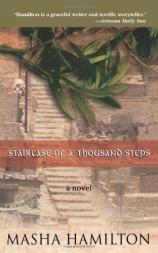Reading Group Guide
Discussion Questions
Staircase of a Thousand Steps

1). Although the book is set in a highly politicized region, the novel isn't political. What does Hamilton gain be focussing her book on character and plot rather than politics? How would you define a "political novel"?
2). Medicine plays a critical role in this novel, as does the theme of healing. What wounds run throughout this community, and what, in the end, is the source of (and the process through which) the characters find ways to heal?
3). Hamilton weaves many themes and threads into this novel: old versus new, tradition versus modernity, individuality versus community. What themes emerge as primary?
4). How is this novel similar to other books about traditional communities facing the rising tide of modernism? How is it unique?
5). Staircase of a Thousand Steps addresses gender conflicts in a variety of sub-plots. What are these sub-plots, and how do they work together to move the novel forward? Were you surprised to see traditional male roles questioned in the story? Where do the village women ultimately gain their power and voice?
6). Is this novel a loose re-telling of Romeo & Juliet?
7). At times the novel reads like a fable. Magical elements pepper the book, and Hamilton's use of time is somewhat fluid, though the story definitely takes place in 1967. How does this affect one's reading of the story? Do you feel that in a sense the story is timeless? What makes it so?
8). Harif is a shepherd. Faridah is a midwife. How do characters roles and/or jobs illuminate the story?
Staircase of a Thousand Steps
- Publication Date: May 7, 2002
- Paperback: 288 pages
- Publisher: Blue Hen Trade
- ISBN-10: 0425185303
- ISBN-13: 9780425185308







